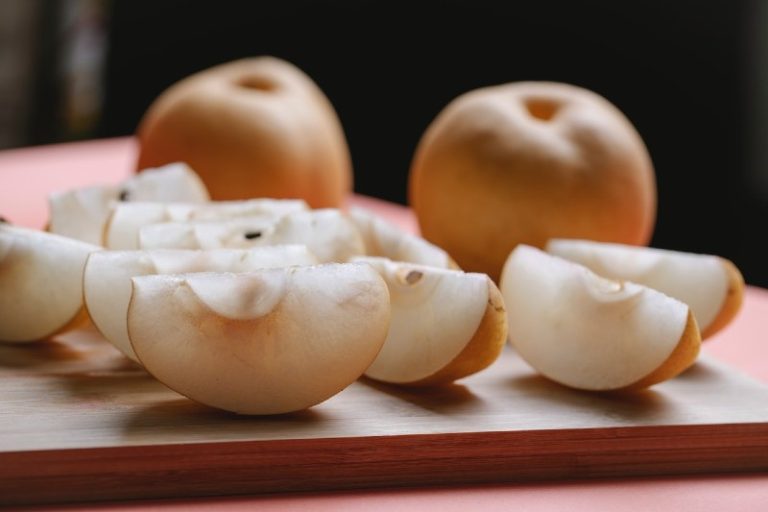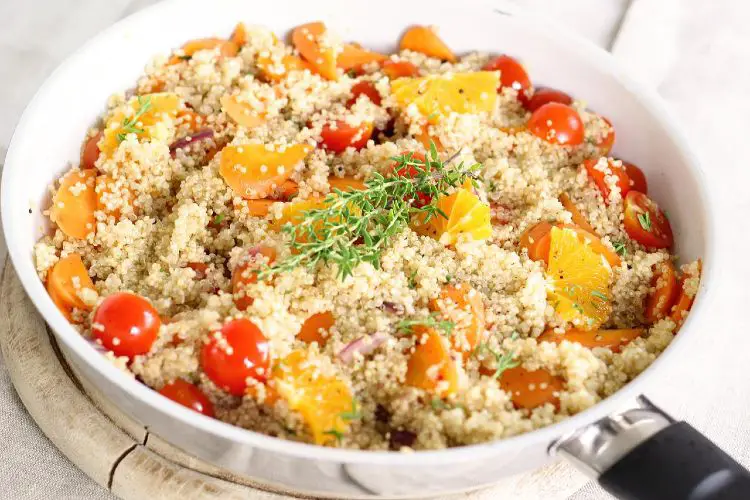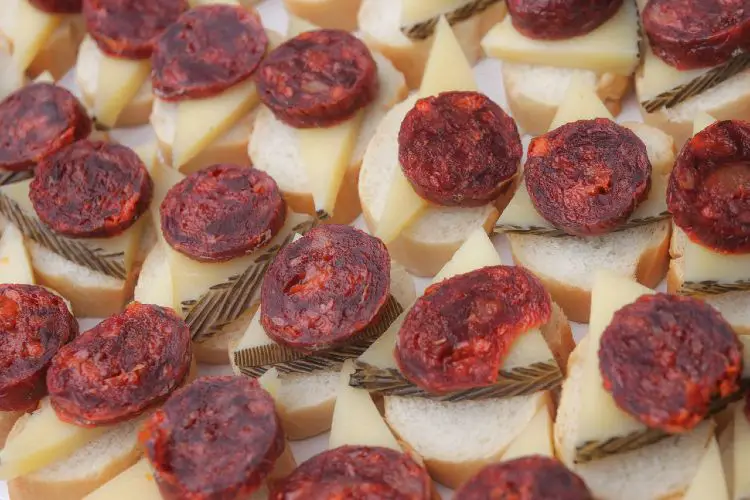Thai Cookery Author Oi Cheepchaiissara
Oi Cheepchaiissara is one of the world’s best-selling authors of Thai cookery books. Her work has been translated into French, Spanish, Dutch, German, Slovak and Swedish to name just a few languages, and some of these editions even find their way into bookstores in Thailand. She lives 50 miles from London, in Colchester, Essex, where she teaches Thai cooking to small groups of people, from beginners to chefs. She writes a food blog at her website, www.modernthaifood.com, and she has a second website where you can browse through her e-books, at www.thaifoodsecrets.com. We sent a Foodie Bugle Thai food loving reporter to interview her, and, as you can see, he started with a very direct question!
First, how exactly DO you pronounce your name?
Which one? Oi is my official Thai nickname and means “sweet, like sugar cane.” That’s easy. We have short nicknames in Thailand because our family names are unique to each family and often quite long. My family name is “Cheep-chai-ISS-ara.”
What inspired you to write books on Thai cooking?
Maybe just thinking about where I come from. When anyone goes to a different country they like to bring something from home to remind them of their culture. Cooking is a big part of Thai culture and I brought a knowledge of it with me. Once I got serious about it, I kept researching and cooking and taking notes. Then, when Murdoch Books asked me to do all the recipes for The Food of Thailand, I was ready for the challenge.
Do you think you’ve made a difference to the way Thai food is enjoyed in the west?
I hope so. I try to recreate the dishes I enjoyed during the twenty-five years I spent in Thailand, before I came to England. It’s impossible to be completely authentic because Thai food itself is constantly adapting to foreign influences. I also tend to tone down some of our more extreme dishes.
No insects, then?
Definitely not. They might be popular as street food, but you won’t find them in my recipes. Thai people can also enjoy an occasional bitter taste in their food, but again I try to avoid it. Sweet, sour, hot, salty – yes – but I use very few bitter ingredients. An exception is Bitter Melon with Minced Pork and Red Dates Soup in my e-book Thai Soup Secrets.
What’s your favourite Thai dish?
It’s very hard to pick from hundreds of dishes, but one I love to cook is Red Curry with Mixed Vegetables and Goji Berries, from Thai Vegetarian Secrets. I use several types of vegetable to get different textures and to add colour. For example, mushrooms bring a meaty texture, purple aubergine and marrow bring smoothness, and sugar-snap peas bring crunchiness. The goji berries add more colour, and, of course, plenty of extra nutrition.
What do you think is wrong – if anything – with the average western person’s attitude to food, particularly in the UK and North America?
I think a lot of people treat food as something that’s provided by someone else. It’s just fuel – when really it should be an activity that involves preparation and cooking and eating – and having fun. A popular word in Thailand is “sanuk” (fun). Everything has to be “sanuk,” especially cooking.
Can anyone learn to cook Thai?
I teach all kinds of people, so yes, I think anyone can learn basic Thai dishes, like curries cooked with home-made paste. I’ve taught teenagers and pensioners; one of my students was a young girl of just 13 years of age and one gentleman was over 90, and they both cooked really well.
Would you say your recipes are easy or difficult?
Both. Some are very straightforward, like stir-fries using what we call “day-old rice” (pre-cooked or leftover jasmine rice). But it would be boring if all the dishes were too easy, wouldn’t it? So I include plenty that are quite challenging. Sticky Rice with Banana and Black Beans in Banana Leaf is a lovely Thai dessert but it’s not something you can throw together quickly.
Do Thai people enjoy food from other countries as much as we enjoy Thai food?
Absolutely. As you’ve probably guessed, Thai people are crazy about food, all kinds of food. If you visit Bangkok you’ll find hundreds of western food outlets and lots of Chinese, Vietnamese, Japanese and Malaysian restaurants. My friends eat out in them all the time. We tend to eat Thai food mainly at home.
Do you think our willingness to embrace ethnic cooking is at odds with the local food movement?
Not at all. I encourage people to use locally grown produce wherever possible. For several years I’ve been showing my sauces at farmers’ markets and food fairs in East Anglia, so I know how important it is to keep “food miles” as low as we can. Just think of a lovely Massaman Curry, with pumpkin, potato, courgettes – all kinds of seasonal vegetables that can be grown locally. Only a few of the spices and fresh herbs need to be imported, and, of course, coconut milk and jasmine rice which need to be the genuine, Thai-grown product.
In your classes you’ve shown hundreds of people how to cook basic Thai dishes. Do you know if your students continue to cook Thai once they’ve returned home?
Yes, nearly all of them do – and they usually let me know how they got on. Hearing about their experiences is one of the most rewarding parts of my work. After all, readers of my books don’t normally write to say if a recipe they cooked turned out to be tasty or not. But once I’ve had personal contact by teaching someone, step-by-step, how to cook a particular dish, very often I get a note to say they’ve cooked the same meal at home.
Recently you’ve switched from books to e-books. Why?
My business partner pointed out that e-books were becoming popular. I believe they now sell more than paperbacks on Amazon. Then the iPad was announced and it’s just so convenient in the kitchen that we decided to prepare a series of e-books specially for it.
How do your e-books compare to your printed books?
Personally, I think they’re better. They’ve given me more scope to be adventurous, so I’ve been able to include recipes that were perhaps too complicated for the printed books. I’m thinking of dishes like Hand Made Egg Noodles with Spicy Duck Soup, in Thai Noodle Secrets, or Banana Blossom with Mixed Seafood Salad, in Thai Starter Secrets. You have to be a real “foodie” to attempt these recipes and I’ve used several pages to describe them. Fortunately, I get a lot more space in e-books – and a greater number of photographs to illustrate what I’m doing.
We don’t often see you on television. Why is that?
Maybe they can’t squeeze my long name into the credits! Seriously, I have a small team now to handle various media, so video and TV are on the agenda. We’re working on some new ideas that will introduce Thai cooking to an even wider audience. Watch this space!
Oi’s website is: http://www.modernthaifood.com/



